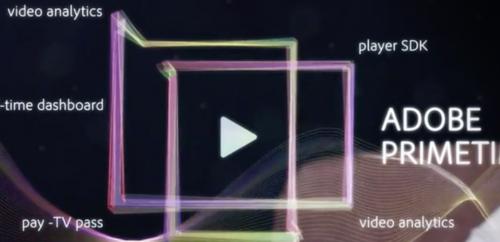I recently talked with Horia Galatanu, senior product manager for Adobe, to learn more about Adobe’s role in TV Everywhere, how the TV Everywhere model is evolving, and where the future of the business is going. Read on for a few highlights from the interview.
FD: What do you do for Adobe in regards to your contribution towards TV Everywhere?
HG: I manage the product formerly known as Adobe Pass TV Everywhere, now known as Primetime[customers include Turner, ESPN, NBCU, Fox, Disney, Viacom, and Comcast]. I manage the authentication part for Primetime, which connects the programmers to a system so that they can easily see and verify whether a user is a cable subscriber, and whether they have a particular channel in their package. For example, if I’m a Comcast user, and I want to watch CNN on the live streamer, then I would log into the system and put in my provider name, which would then take me to the Comcast site. There, you type in your username and password, and it affirms if you have CNN in your package deal. Then you can get the video playback.
[Adobe] is the middleman in these transactions.
Can you explain how Adobe’s products are contributing to the TV Everywhere experience?
We are working to make the authentication process better. What we’re trying to do for the consumer right now is make it a better user experience. The authentication processes can be long, but behind the scenes there are plans always in the works to make the process easier, such as by only requiring users to sign in once a month, or once a year possibly. Or by having one single sign-on for multiple apps and sites.
We also have Adobe Player SDK, which is a video player that works on all platforms. We’re working to ensure a smooth video playback experience. And we offer Adobe Primetime Ad Insertion. This looks just like TV. The goal here is to ensure that ads run smoothly and are on par with what people see on TV.
Another piece we offer is analytics. Our tools allow our customers the ability to measure the success of an event.
What are the challenges associated with the TV Everywhere model?
Well, it’s a very complex model. Users don’t usually understand or know whether they have internet from one provider, or pay TV from another. Some people think it’s all coming from the same thing. CTAM is really trying to clarify this model for users. The OATC (Open Authentication Technology Committee) also has a charter coming up with recommendations for the model. Adobe is part of both of these entities. So implementing TV Everywhere really is an industry-wide project—it takes a village.
Can you provide some insights on future consumer trends?
It’s amazing to see all this content online now–the breadth of what you get on TV, there’s just so much you can watch. TV Everywhere is changing the way you perceive TV. It will get to the point where you don’t even have to log in. The fact that users have to sign in to access all of their premium content can be a barrier, whether you know your credentials or not. The system will get to the point where it automatically detects what you want to do. An easier sign-in process will open up this ward of content that’s hard to find today. It’s difficult to get to it right now, but it’s there. I imagine in the future all of this content will be less difficult to find and access. That’s very exciting and it will fundamentally change the way we perceive TV.
Right now the frequency of the sign-ins is not exactly where we want it to be – there are so many sites and apps to download.
Do you have advice to share for programmers who are thinking of jumping into this area?
The user experience is key in all of this. You must take the time to develop a good user experience. If you just get the premium content up and running that’s fine, but that’s only the first step. Users need a good experience to justify coming back.
Read more about the concept of TV Everywhere and how it’s changing the TV-watching experience.
